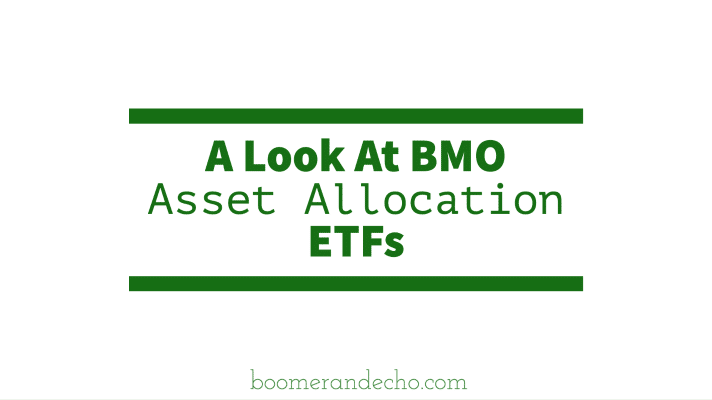This article has been sponsored by BMO Canada. All opinions are my own.
 I’m on record to say that the vast majority of self-directed investors should simply use a single asset allocation ETF to build their investment portfolios.
I’m on record to say that the vast majority of self-directed investors should simply use a single asset allocation ETF to build their investment portfolios.
What’s not to like about asset allocation ETFs? Investors get a low cost, risk appropriate, globally diversified portfolio in one easy to use product. It’s a fresh take on an old idea – the global balanced mutual fund – updated for the 2020’s using low-cost ETFs.
Investors don’t even have to worry about rebalancing their portfolio when they add or withdraw money, or when markets move up and down. Asset allocation ETFs automatically rebalance themselves regularly to maintain their original target asset mix.
This article looks at BMO’s line-up of asset allocation ETFs, which include a conservative (ZCON: 40/60), balanced (ZBAL: 60/40), growth (ZGRO: 80/20), and balanced ESG (ZESG: 60/40) option.
For a YouTube video about these ETFs, click here.
These BMO asset allocation ETFs are available for self-directed investors to purchase through their online brokerage account. Notably, these ETFs can be traded commission-free through BMO InvestorLine and Wealthsimple Trade.
What’s inside BMO’s Asset Allocation ETFs?
Launched in February 2019, BMO’s core asset allocation ETFs are made up of seven underlying ETFs representing various asset classes and geographic regions.
On the equity side we have:
- ZCN – BMO S&P/TSX Capped Composite Index ETF
- ZSP – BMO S&P 500 Index ETF
- ZEA – BMO MSCI EAFE Index ETF
- ZEM – BMO MSCI Emerging Markets Index ETF
While on the fixed income side we have:
- ZAG – BMO Aggregate Bond Index ETF
- ZGB – BMO Government Bond Index ETF
- ZMU – BMO Mid-Term US IG Corp Bond Hedged to CAD Index ETF
Altogether these seven ETFs represent nearly 5,000 individual stock and bond holdings from around the world.
In terms of geographic equity allocation, the BMO asset allocation ETFs hold 25% in Canadian stocks, 25% in international stocks, 40% to 41.25% in US stocks, and 8.75% to 10% in emerging market stocks.
BMO reviews their portfolios quarterly and will rebalance any fund that is more or less than 2.5% off from its target weight. In reality, these funds are rebalanced regularly with new cashflows from new investors.
BMO’s Balanced ESG ETF (ZESG) is made up of six underlying ETFs, including:
- ESGY – BMO MSCI USA ESG Leaders Index ETF
- ZGB – BMO Government Bond Index ETF
- ESGA – BMO MSCI Canada ESG Leaders Index ETF
- ESGE – BMO MSCI EAFE ESG Leaders Index ETF
- ESGB – BMO ESG Corporate Bond Index ETF
- ESGF – BMO ESG US Corporate Bond Hedged To CAD Index ETF
The management expense ratio for each of the BMO asset allocation ETFs is 0.20%. There is no duplication of fees or additional charges for the underlying ETFs. Continue Reading…









